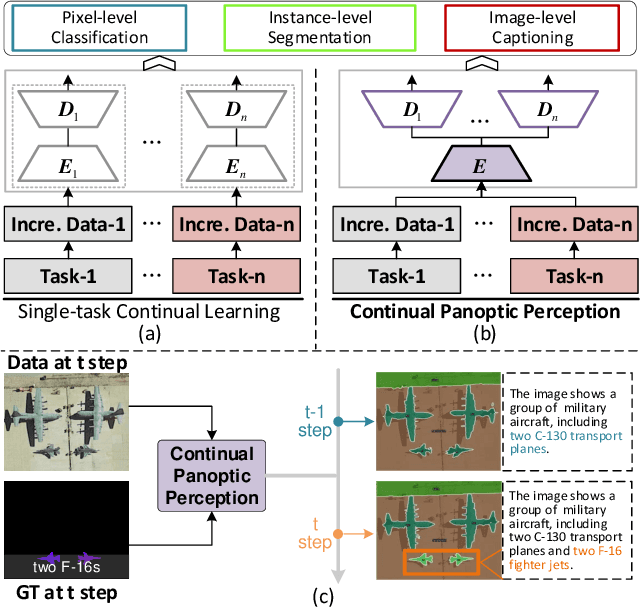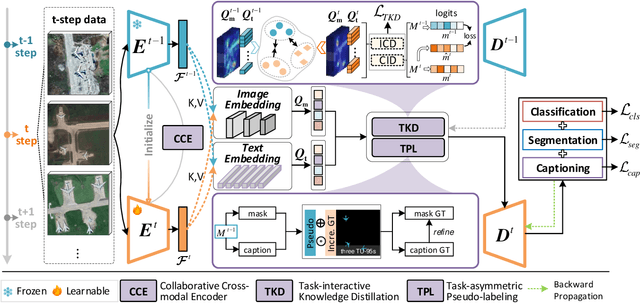Tian Li
Differentially Private Federated Clustering with Random Rebalancing
Aug 08, 2025Abstract:Federated clustering aims to group similar clients into clusters and produce one model for each cluster. Such a personalization approach typically improves model performance compared with training a single model to serve all clients, but can be more vulnerable to privacy leakage. Directly applying client-level differentially private (DP) mechanisms to federated clustering could degrade the utilities significantly. We identify that such deficiencies are mainly due to the difficulties of averaging privacy noise within each cluster (following standard privacy mechanisms), as the number of clients assigned to the same clusters is uncontrolled. To this end, we propose a simple and effective technique, named RR-Cluster, that can be viewed as a light-weight add-on to many federated clustering algorithms. RR-Cluster achieves reduced privacy noise via randomly rebalancing cluster assignments, guaranteeing a minimum number of clients assigned to each cluster. We analyze the tradeoffs between decreased privacy noise variance and potentially increased bias from incorrect assignments and provide convergence bounds for RR-Clsuter. Empirically, we demonstrate the RR-Cluster plugged into strong federated clustering algorithms results in significantly improved privacy/utility tradeoffs across both synthetic and real-world datasets.
Stochastic Alignments: Matching an Observed Trace to Stochastic Process Models
Jul 09, 2025Abstract:Process mining leverages event data extracted from IT systems to generate insights into the business processes of organizations. Such insights benefit from explicitly considering the frequency of behavior in business processes, which is captured by stochastic process models. Given an observed trace and a stochastic process model, conventional alignment-based conformance checking techniques face a fundamental limitation: They prioritize matching the trace to a model path with minimal deviations, which may, however, lead to selecting an unlikely path. In this paper, we study the problem of matching an observed trace to a stochastic process model by identifying a likely model path with a low edit distance to the trace. We phrase this as an optimization problem and develop a heuristic-guided path-finding algorithm to solve it. Our open-source implementation demonstrates the feasibility of the approach and shows that it can provide new, useful diagnostic insights for analysts.
Topology-Aware Knowledge Propagation in Decentralized Learning
May 16, 2025Abstract:Decentralized learning enables collaborative training of models across naturally distributed data without centralized coordination or maintenance of a global model. Instead, devices are organized in arbitrary communication topologies, in which they can only communicate with neighboring devices. Each device maintains its own local model by training on its local data and integrating new knowledge via model aggregation with neighbors. Therefore, knowledge is propagated across the topology via successive aggregation rounds. We study, in particular, the propagation of out-of-distribution (OOD) knowledge. We find that popular decentralized learning algorithms struggle to propagate OOD knowledge effectively to all devices. Further, we find that both the location of OOD data within a topology, and the topology itself, significantly impact OOD knowledge propagation. We then propose topology-aware aggregation strategies to accelerate (OOD) knowledge propagation across devices. These strategies improve OOD data accuracy, compared to topology-unaware baselines, by 123% on average across models in a topology.
Efficient Distributed Optimization under Heavy-Tailed Noise
Feb 06, 2025Abstract:Distributed optimization has become the default training paradigm in modern machine learning due to the growing scale of models and datasets. To mitigate communication overhead, local updates are often applied before global aggregation, resulting in a nested optimization approach with inner and outer steps. However, heavy-tailed stochastic gradient noise remains a significant challenge, particularly in attention-based models, hindering effective training. In this work, we propose TailOPT, an efficient framework designed to address heavy-tailed noise by leveraging adaptive optimization or clipping techniques. We establish convergence guarantees for the TailOPT framework under heavy-tailed noise with potentially unbounded gradient variance and local updates. Among its variants, we highlight a memory and communication efficient instantiation which we call $Bi^2Clip$, which performs coordinate-wise clipping at both the inner and outer optimizers, achieving adaptive-like performance (e.g., Adam) without the cost of maintaining or transmitting additional gradient statistics. Empirically, TailOPT, including $Bi^2Clip$, demonstrates superior performance on several language tasks and models, outperforming state-of-the-art methods.
AI-Powered Algorithm-Centric Quantum Processor Topology Design
Dec 18, 2024Abstract:Quantum computing promises to revolutionize various fields, yet the execution of quantum programs necessitates an effective compilation process. This involves strategically mapping quantum circuits onto the physical qubits of a quantum processor. The qubits' arrangement, or topology, is pivotal to the circuit's performance, a factor that often defies traditional heuristic or manual optimization methods due to its complexity. In this study, we introduce a novel approach leveraging reinforcement learning to dynamically tailor qubit topologies to the unique specifications of individual quantum circuits, guiding algorithm-driven quantum processor topology design for reducing the depth of mapped circuit, which is particularly critical for the output accuracy on noisy quantum processors. Our method marks a significant departure from previous methods that have been constrained to mapping circuits onto a fixed processor topology. Experiments demonstrate that we have achieved notable enhancements in circuit performance, with a minimum of 20\% reduction in circuit depth in 60\% of the cases examined, and a maximum enhancement of up to 46\%. Furthermore, the pronounced benefits of our approach in reducing circuit depth become increasingly evident as the scale of the quantum circuits increases, exhibiting the scalability of our method in terms of problem size. This work advances the co-design of quantum processor architecture and algorithm mapping, offering a promising avenue for future research and development in the field.
Reconciling Semantic Controllability and Diversity for Remote Sensing Image Synthesis with Hybrid Semantic Embedding
Nov 22, 2024



Abstract:Significant advancements have been made in semantic image synthesis in remote sensing. However, existing methods still face formidable challenges in balancing semantic controllability and diversity. In this paper, we present a Hybrid Semantic Embedding Guided Generative Adversarial Network (HySEGGAN) for controllable and efficient remote sensing image synthesis. Specifically, HySEGGAN leverages hierarchical information from a single source. Motivated by feature description, we propose a hybrid semantic Embedding method, that coordinates fine-grained local semantic layouts to characterize the geometric structure of remote sensing objects without extra information. Besides, a Semantic Refinement Network (SRN) is introduced, incorporating a novel loss function to ensure fine-grained semantic feedback. The proposed approach mitigates semantic confusion and prevents geometric pattern collapse. Experimental results indicate that the method strikes an excellent balance between semantic controllability and diversity. Furthermore, HySEGGAN significantly improves the quality of synthesized images and achieves state-of-the-art performance as a data augmentation technique across multiple datasets for downstream tasks.
HelloMeme: Integrating Spatial Knitting Attentions to Embed High-Level and Fidelity-Rich Conditions in Diffusion Models
Oct 30, 2024



Abstract:We propose an effective method for inserting adapters into text-to-image foundation models, which enables the execution of complex downstream tasks while preserving the generalization ability of the base model. The core idea of this method is to optimize the attention mechanism related to 2D feature maps, which enhances the performance of the adapter. This approach was validated on the task of meme video generation and achieved significant results. We hope this work can provide insights for post-training tasks of large text-to-image models. Additionally, as this method demonstrates good compatibility with SD1.5 derivative models, it holds certain value for the open-source community. Therefore, we will release the related code (\url{https://songkey.github.io/hellomeme}).
Reweighting Local Mimina with Tilted SAM
Oct 30, 2024Abstract:Sharpness-Aware Minimization (SAM) has been demonstrated to improve the generalization performance of overparameterized models by seeking flat minima on the loss landscape through optimizing model parameters that incur the largest loss within a neighborhood. Nevertheless, such min-max formulations are computationally challenging especially when the problem is highly non-convex. Additionally, focusing only on the worst-case local solution while ignoring potentially many other local solutions may be suboptimal when searching for flat minima. In this work, we propose Tilted SAM (TSAM), a generalization of SAM inspired by exponential tilting that effectively assigns higher priority to local solutions that are flatter and that incur larger losses. TSAM is parameterized by a tilt hyperparameter t and reduces to SAM as t approaches infinity. We prove that (1) the TSAM objective is smoother than SAM and thus easier to optimize; and (2) TSAM explicitly favors flatter minima as t increases. This is desirable as flatter minima could have better generalization properties for certain tasks. We develop algorithms motivated by the discretization of Hamiltonian dynamics to solve TSAM. Empirically, TSAM arrives at flatter local minima and results in superior test performance than the baselines of SAM and ERM across a range of image and text tasks.
Generalization Error of the Tilted Empirical Risk
Sep 28, 2024Abstract:The generalization error (risk) of a supervised statistical learning algorithm quantifies its prediction ability on previously unseen data. Inspired by exponential tilting, Li et al. (2021) proposed the tilted empirical risk as a non-linear risk metric for machine learning applications such as classification and regression problems. In this work, we examine the generalization error of the tilted empirical risk. In particular, we provide uniform and information-theoretic bounds on the tilted generalization error, defined as the difference between the population risk and the tilted empirical risk, with a convergence rate of $O(1/\sqrt{n})$ where $n$ is the number of training samples. Furthermore, we study the solution to the KL-regularized expected tilted empirical risk minimization problem and derive an upper bound on the expected tilted generalization error with a convergence rate of $O(1/n)$.
Continual Panoptic Perception: Towards Multi-modal Incremental Interpretation of Remote Sensing Images
Jul 19, 2024



Abstract:Continual learning (CL) breaks off the one-way training manner and enables a model to adapt to new data, semantics and tasks continuously. However, current CL methods mainly focus on single tasks. Besides, CL models are plagued by catastrophic forgetting and semantic drift since the lack of old data, which often occurs in remote-sensing interpretation due to the intricate fine-grained semantics. In this paper, we propose Continual Panoptic Perception (CPP), a unified continual learning model that leverages multi-task joint learning covering pixel-level classification, instance-level segmentation and image-level perception for universal interpretation in remote sensing images. Concretely, we propose a collaborative cross-modal encoder (CCE) to extract the input image features, which supports pixel classification and caption generation synchronously. To inherit the knowledge from the old model without exemplar memory, we propose a task-interactive knowledge distillation (TKD) method, which leverages cross-modal optimization and task-asymmetric pseudo-labeling (TPL) to alleviate catastrophic forgetting. Furthermore, we also propose a joint optimization mechanism to achieve end-to-end multi-modal panoptic perception. Experimental results on the fine-grained panoptic perception dataset validate the effectiveness of the proposed model, and also prove that joint optimization can boost sub-task CL efficiency with over 13\% relative improvement on panoptic quality.
 Add to Chrome
Add to Chrome Add to Firefox
Add to Firefox Add to Edge
Add to Edge